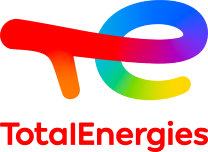What is the electricity value chain?
02/14/2024
Renewable energy and flexible power generation, notably from natural gas, energy storage, trading and sales: TotalEnergies is committed to integration across the entire electricity value chain.
What is the electricity value chain?
Serving energy demand with low carbon electricity is a key focus in the roadmaps of countries committed to getting to net zero by 2050. It's an essential part of the energy transition and a fast-growing market in which we are staking out a position.
In order to become a major player in electricity, we are aiming to profitably integrate across the electricity value chain.
The links in the chain include renewable energy production and flexible power generation, notably from natural gas; energy storage; trading and sales.
Renewables
Renewable energies are the main driver for decarbonizing the electricity mix.
For us, that means growing massively in renewables while defining profitable business models. Our objective is to rank among the world's top five producers of renewable electricity, with gross capacity of 100 GW by 2030.
How are we going to get there? By keeping costs down and using our existing skills in managing megaprojects, on the one hand, and by tapping external financing at competitive rates and divesting some assets, on the other.
Flexible generation
Due to the intermittent nature of solar and wind energy, there is a need for flexible generation capacity to ensure grid stability and an uninterrupted supply of electricity to our customers. Natural gas, in particular, is an ideal partner for renewable energies since flexible and dispatchable gas-fired power plants allow for a secure supply of electricity in response to inclement weather and swings in demand.
How are we going to get there? By building a portfolio of combined cycle gas turbine (CCGT) power plants (in progress since 2015), with 5.6 GW of capacity already in operation in 2022 and an objective of 7-10 GW further out.
Energy storage
Energy storage helps ensure grid stability and satisfy demand. At critical junctures, storage systems make it possible to inject energy into the network and distribute energy.
How are we going to get there? By taking advantage of this market's fast growth and by leveraging our Saft affiliate's technological expertise to develop safe and effective large-scale battery energy storage systems. We aim to deploy 5 GW of storage capacity worldwide by 2030.
Trading
In the markets, we anticipate an upward trend in electricity prices over the long term as demand outstrips supply. In addition, the very strong growth in renewables will generate volatility. These two factors will create opportunities for traders who, thanks to effective risk management, will choose exposure to deregulated markets (mainly OECD countries and Brazil) or regulated markets (mainly emerging economies).
How are we responding? By relying on a combination of long-term power purchase agreements (PPAs) and exposure to wholesale markets to make the most of the value created by price fluctuations.
Customers
On the path to net zero, the challenge for our customers, and society as a whole, is to have access to affordable, clean energy that will make it possible to ramp up electric mobility while learning to save energy and use it efficiently.
How are we responding? By continuing to develop our customer portfolio, with the goal of serving 10 million B2C and B2B customers and selling 130 TWh by 2030. By installing 150,000 electric vehicle charge points in Europe. By proposing long-term power purchase agreements and decentralized solar production solutions to our industrial customers to help them reduce their carbon footprint.
Conclusion
Beyond producing renewable energies, we are positioning ourselves as an integrated player in electricity at the global level, from production to distribution to our end customers. We are already present in these activities with ambitious objectives. The challenge is to keep growing and to develop more synergy to reduce costs, create new opportunities, ensure more effective risk management, etc. We believe that by being present across the value chain for electricity, the key energy of the 21st century, we will be able to contribute to the energy transition while creating value for all, just as we have done so successfully in oil and gas.
Keywords: Climate, electrification, Paris Agreement, objective: below 2°C by 2050, net zero trajectory, CO2, t/y, billions of tons per year, capacity in terawatts, energy transition, production, wind consumption, solar consumption, transactions, wholesale markets, spot markets, PPA, value chain, flexible power generation, customer supply, France, Belgium, Spain, 5.6 GW, objective: 7-10 GW, focus, technological expertise, market growth, higher rices, electricity price, fast charging, customer portfolio, 150,000 charges, electricity contracts, decentralized solar production, integrated buyer, generation, distribution, ambitious objectives, synergy, lower costs, risk management, key energy, 21st century, energy transition.



